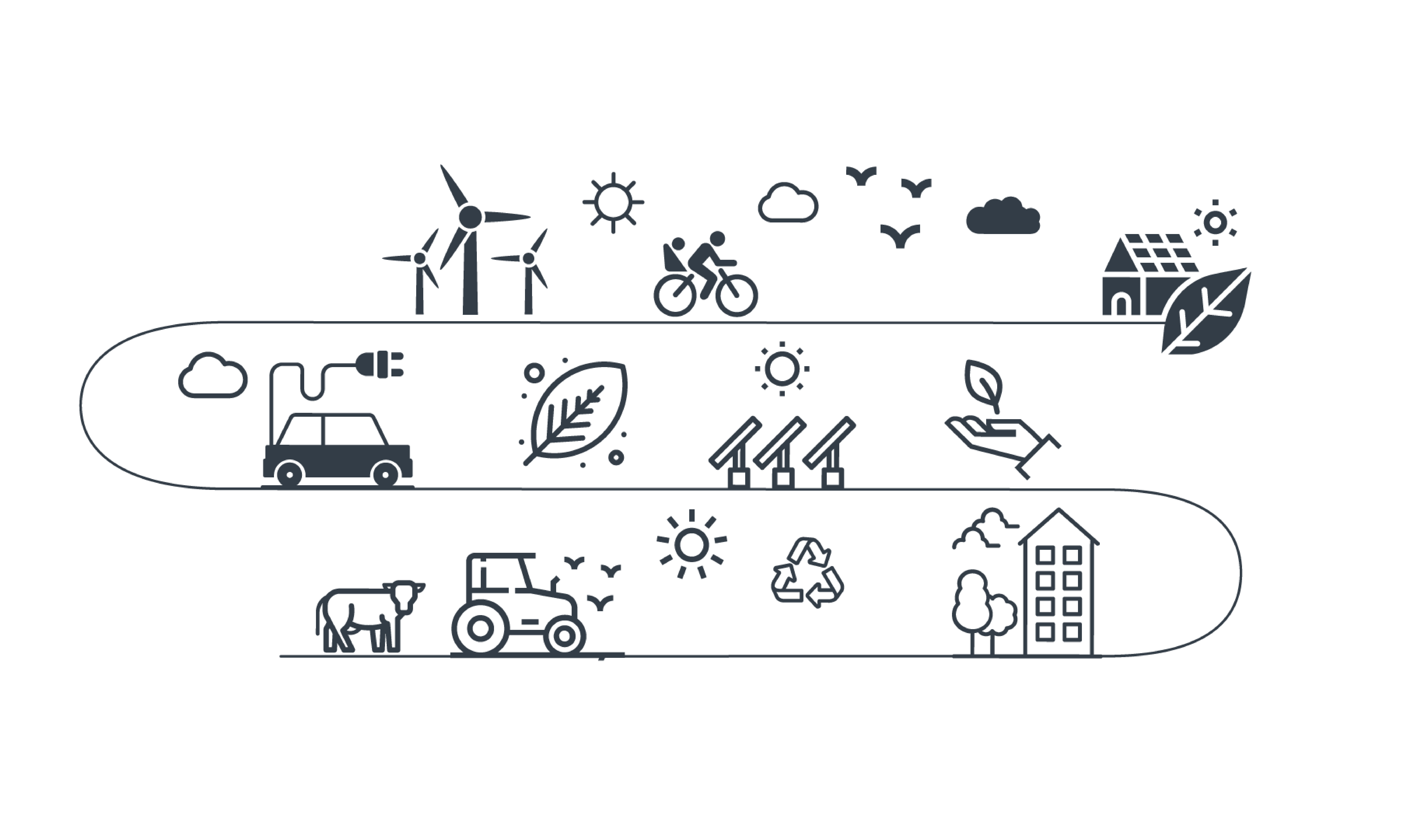You need to confirm you are over the age of 25 and living in Scotland
Construction and built environment
The creation, running and demolition of buildings is accountable for around 40% of carbon emissions worldwide. As we decarbonise our built environment, the construction and built environment industry must adapt its processes to be more sustainable.
Civil Engineer Meg Scott is helping make the world a greener place
Meg, a graduate apprentice, has put her learning into practice after deciding against the traditional university route. Now, Meg is responsible for the development of signalised junctions, traffic calming measures and infrastructure design for sustainable travel.
Read more about Meg's story here.
Your prospects in a construction and built environment career
Currently, there are 241,600 people employed in construction – 30% of which are in skilled building trades.
It’s estimated that work connected to net zero has the potential to create a further 22,500 construction jobs by 2028 throughout the UK. This makes construction one of Scotland’s target green industries today.
The construction and built environment industry is developing new approaches to powering and heating existing buildings to improve energy efficiency within them, including:
- professional management roles
- IT
- marketing
- skilled trades
There could be many roles your current skillset is suited to.
Homes and infrastructures
Around 15% of Scotland’s total greenhouse gas emissions come from occupied homes. To meet net zero, we'll work to improve existing buildings before building new ones.
New homes and buildings will be designed with heat loss in mind. They’ll work to retain good air quality and heating supplied from renewable sources. Similarly, homes will be retrofitted to decarbonise them and improve energy efficiency.
The construction and built environment industry also creates our infrastructure – roads, railways and bridges. There are a wide range of planned infrastructure projects that will support the move to net zero, including improvements to both rails and roads.
Modern methods of construction
New methods of construction will be increasingly relied upon for both new and existing buildings. This involves constructing select elements of a building in a factory prior to its built – a more productive and cost-effective approach that will cause less harm to the environment.
Digitalisation
Digital tools are increasingly being used by the construction and built environment industry to improve productivity, safety and environmental impact. These include:
- project management software
- digital surveying and mapping equipment
- 3D modelling
- health and safety compliance software
- business management programmes
Technology is used at every stage of construction – Scotland needs skilled people who can work in these roles.
Construction and the circular economy
Construction and demolition is said to be responsible for around a third of waste in the EU. To become more sustainable, it’s essential we change the way we develop our built environment.
One key part is re-purposing existing buildings rather than demolishing them. Another important aspect is changing how we design new and refurbished buildings. This includes making best use of materials and minimising waste.
Offsite construction
Offsite construction is an eco-friendly method of manufacturing. Building components are made in a factory then transported and installed onsite. This approach contributes to the circular economy by saving resources and reusing materials.
Digital processes
Digital processes are also helping the industry become more green. Building Information Modelling (BIM) allows you to create virtual 3D models of buildings. This information drives material efficiency and reduces waste throughout a building’s lifetime.
Circular construction means workers need to have some digital skills and a knowledge of new building materials. Being able to work with data and software tools helps you build in a more green way. Skills around innovation and managing change are essential.
Now, let’s look at what qualifications and skills you need to get involved with the construction and built environment industry.
Elementary and labouring
Skilled trades
We mentioned before that 30% of construction employees are skilled construction and building tradespeople – such as electricians , plumbers or Joiners.
To learn a new trade you’ll likely need to complete an apprenticeship. Modern Apprenticeships are available to both young people and adults and involve learning on the job at the same time as gaining a qualification and bringing home a wage. Apprenticeships.scot have a wide range of opportunities for you to explore.
Professional
The construction sector is linked to professional roles too. These include:
- architects
- management specialists
- chartered surveyors
- construction-linked engineering roles such as civil and structural engineers
- retrofit coordinators, designers and assessors
There are also opportunities in:
- IT
- data analytics
- project management
- human resources
Many of these professional roles require a degree-level qualification. There are pathways via Graduate Apprenticeships and full-time further or higher education courses.
Low Carbon Trust offer a wide range of green construction and built environment courses – from eco renovating your home to wood fuel. Learn how buildings can be built, heated and powered for a lasting sustainable future.
Construction Scotland and Construction Scotland Innovation Centre have lots of useful information on innovation and developments within the construction sector, including events - many of which are currently hosted online due to the pandemic.
Further information
For further information about the job roles and courses mentioned, including sub-sectors, visit Go Construct.
Explore other industries
Transport
The creation of low carbon transport brings opportunities to develop new skills as part of the transition to net zero.
Nature
Scotland’s nature-based industries represent the second largest source of net emissions after transport - find out how green energy resources can help.
Engineering
Technological innovations that lower energy loss, reduce waste and improve the management of resources will help us meet net zero.
